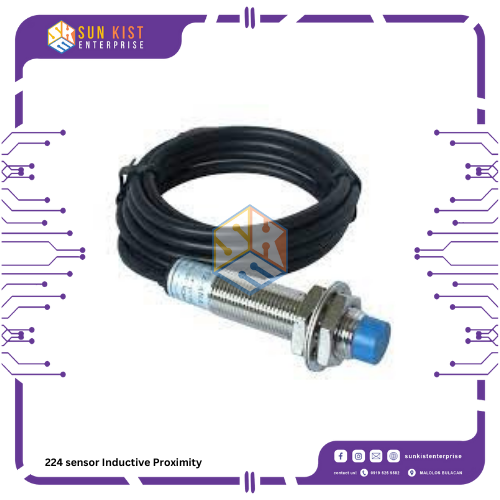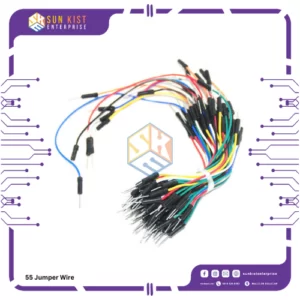Description
An inductive proximity sensor, also known as an inductive sensor or proximity switch, is a type of non-contact sensor used for detecting the presence or absence of metallic objects within its detection range. These sensors are widely used in industrial automation and control systems for various applications. Here are some key features and information about inductive proximity sensors:
1. **Operating Principle:** Inductive proximity sensors operate on the principle of electromagnetic induction. They generate an electromagnetic field around a coil when powered, and when a metallic object enters the field, it disrupts the field, causing a change in the sensor’s output.
2. **Detection Range:** These sensors have a specified detection range, which is the maximum distance at which they can detect a metallic object. The range varies depending on the sensor’s design and specifications.
3. **Types:** Inductive proximity sensors come in various types, including cylindrical, rectangular, and flat-pack designs. The choice of sensor type depends on the specific application and mounting requirements.
4. **Output Types:** These sensors provide a digital output signal, typically a voltage or current signal, when a metal object is detected within their range. The output can be normally open (NO) or normally closed (NC), depending on the sensor.
5. **Sensing Distance:** The sensing distance is the distance from the sensor’s face to the point at which it can reliably detect a metal object. It’s an essential specification to consider when selecting a sensor for a particular application.
6. **Material Compatibility:** Inductive proximity sensors are designed to detect ferrous and non-ferrous metal objects. They are not suitable for non-metallic materials.
7. **Non-Contact Operation:** Inductive proximity sensors do not make physical contact with the target object, making them suitable for applications where physical contact is undesirable or impossible.
8. **Robust and Reliable:** These sensors are known for their durability and reliability in industrial environments. They are resistant to dirt, dust, and moisture.
9. **Applications:** Inductive proximity sensors are used in a wide range of applications, including object detection, automation, machine control, material handling, and safety systems.
10. **Adjustable Sensing Distance:** Some inductive sensors come with adjustable sensing distances, allowing users to fine-tune the detection range to their specific needs.
11. **Mounting Options:** Inductive sensors can be mounted through holes, on brackets, or in other ways to suit the specific installation requirements.
12. **Temperature Range:** They can operate within a specified temperature range, and high-temperature variants are available for use in extreme environments.
Inductive proximity sensors are valuable components in industrial automation and control systems, where reliable and non-contact detection of metallic objects is crucial. When selecting an inductive proximity sensor, it’s important to consider factors such as the material to be detected, the sensor’s operating distance, output type, and environmental conditions to ensure it meets the specific requirements of your application.








Reviews
There are no reviews yet.